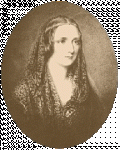And (clay) golems come from hebrew folklore.
EDIT: (thumbed through my monster manual a bit

)
sphinxes come from egyptian/ancient grecian myth of course.
The Banshee is from irish folklore, and half the celestial and infernal hosts (devas, erinyes) are from christian legend. The balor however, is tolkien's Balrog.
The centaur and minotaur are greek too, as is the chimaera. I'm not really sure where the cockatrice and the basilisk come from, but I believe they were from the greek mythology too. Oh also, the hydra is definitely greek. In one of his 12 missions, herakles had to slay a lernean hydra (named after the place where he had to fight it, literally "the hydra of lerna".)
Gorgon/medusa are from greek myth too, although the name gorgon was used to refer medusa and her 2 sisters. I kinda forgot where the petrifying cow part came from.
Griffon is greek too. As are the harpies, and the hippogriffs. And the Manticore. And the pegasus. And the satyr. And the titan.
Dryads/nymphs/pixies/nixies/undine/gnomes and dwarfs are all from english/irish/scottish folklore.
The giant eagle is obviously taken from lord of the rings, although I don't know if it was an original creation of tolkien's.
Homunculus is a term used in psychology for the concept of "a little person within someone else", or something like that. However, I've also read somewhere that they go as far back as the middle ages, created out of feces, and that they were little helpers of wizards.
The kraken can be traced back to natives of the south pacific, I think. With sailors spreading the word around about them.
The merfolk were obviously based on mermaids, who in turn come from sailor stories in the middle ages, I guess.
The mummy is egyptian, obviously.

The worgs are tolkien's wargs.
Zombies originate from haiti/any other place that had a whole voodoo-culture.
That's about all I could think of at the moment, I'll add more if I think of them.











